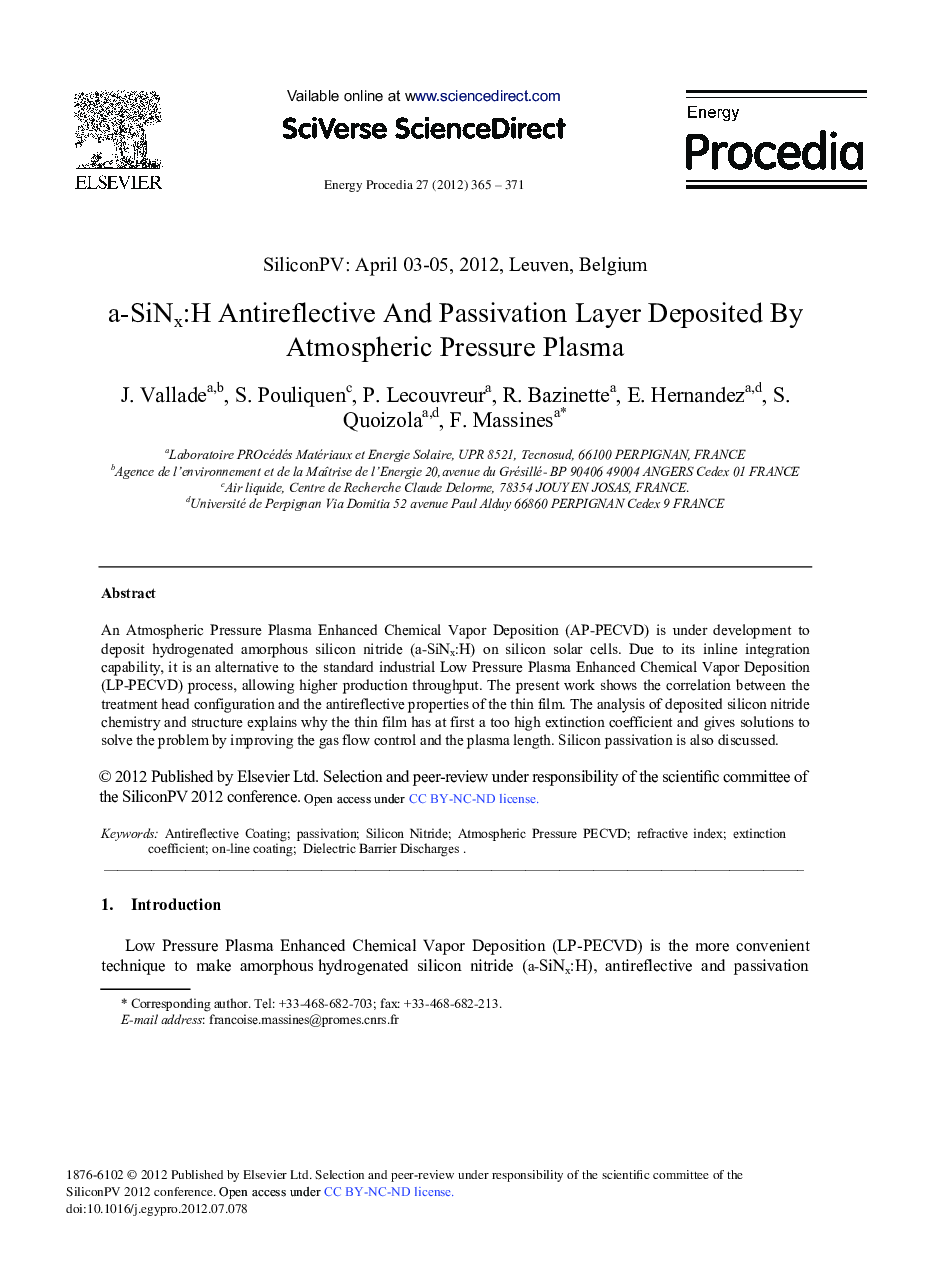| Article ID | Journal | Published Year | Pages | File Type |
|---|---|---|---|---|
| 1513190 | Energy Procedia | 2012 | 7 Pages |
An Atmospheric Pressure Plasma Enhanced Chemical Vapor Deposition (AP-PECVD) is under development to deposit hydrogenated amorphous silicon nitride (a-SiNx:H) on silicon solar cells. Due to its inline integration capability, it is an alternative to the standard industrial Low Pressure Plasma Enhanced Chemical Vapor Deposition (LP-PECVD) process, allowing higher production throughput. The present work shows the correlation between the treatment head configuration and the antireflective properties of the thin film. The analysis of deposited silicon nitride chemistry and structure explains why the thin film has at first a too high extinction coefficient and gives solutions to solve the problem by improving the gas flow control and the plasma length. Silicon passivation is also discussed.
